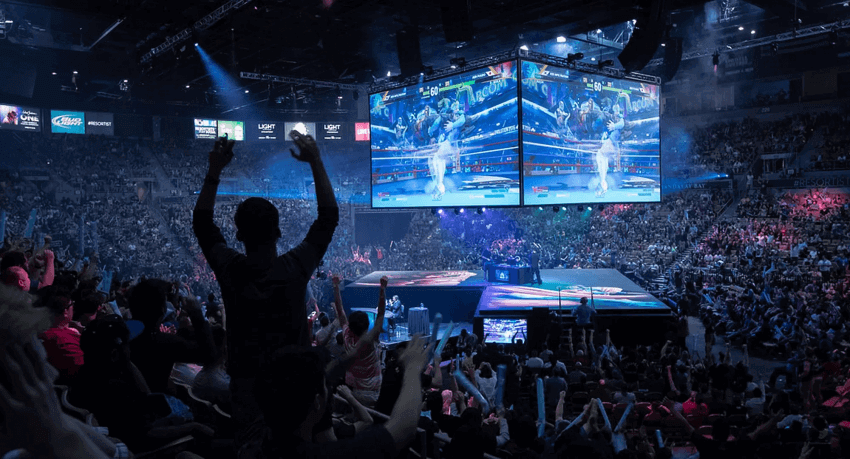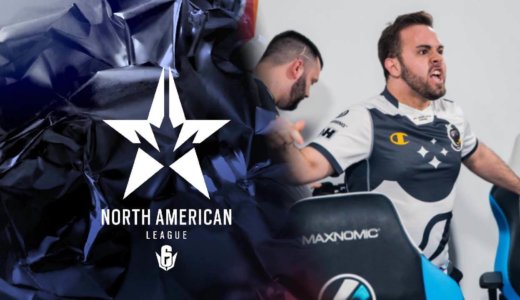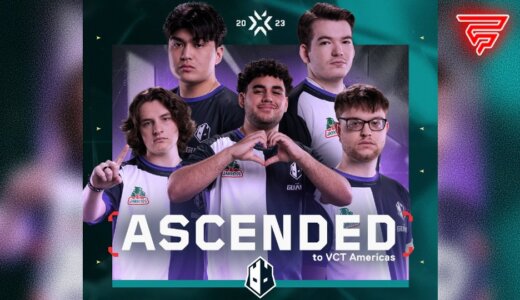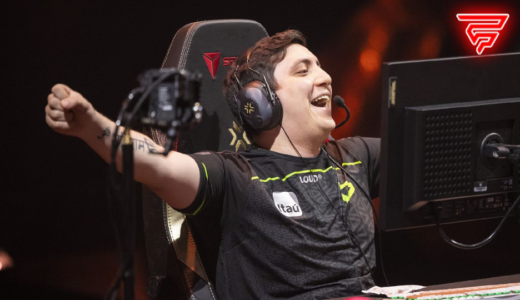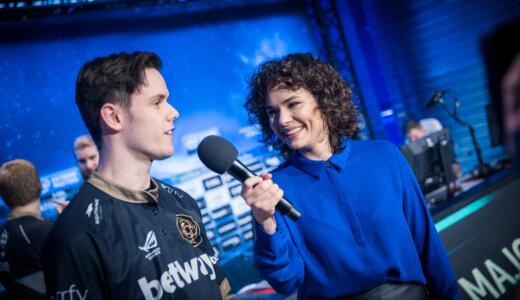When someone says “esports” you probably don’t think of fighting games. That, however, isn’t because they’re not as exciting as other (more popular) esports, but because they’re just not as mainstream. Instead of being backed by just a single developer (as is the case in most esports), fighting games thrive because of an insanely passionate and dedicated player/fan base.
These individuals still convene in big numbers — around 9000 people visited EVO 2019 in Las Vegas — but they keep their biggest passion “a secret.” It’s a tightly-knit community, one that is driven by a love for a genre that most people shrug off, thinking it’s something pedestrian or inherently uninteresting.
But despite what most think, fighting games are every bit as exciting as other esports. They’re equally as ripe with narratives, mind-blowing twists, upsets, and everything in between. The fact that it’s always 1 vs. 1 only makes things that much more entertaining. It’s mano a mano, and just a single press of a button separates a champion from a middle-of-the-pack challenger. In other words, it always goes down to the fire, and there aren’t any forty/fifty-minute drawn-out slugfests either; the average clash lasts for just a couple of minutes, and it’s insanely exciting from start to finish.
It’s all mighty entertaining, and the games are so varied and different (while still having a similar core) that there’s truly a title out there for everyone.
What’s It All About?
Fighting games, as an esport, are fairly simple by design. There are many different titles out there and most of them have a slew of tournaments sprinkled throughout the year. You can check a fairly thorough list on Liquipedia. The biggest tournament of them all, however, is EVO (Evolution Championship Series), organized mid-summer at the Mandalay Bay, Las Vegas. For fighting games fans and enthusiasts, EVO is like Christmas and New Year’s Eve combined. That’s the one place where the best players in the world compete for the biggest prizes and glory.
When you know the depth and complexity that come with fighting games, that’s when things become a lot more interesting. These players are often counting frames. They know just how long each animation lasts, and whether there’s an opening or not. They know just how long they have to wait to capitalize, along with the many nuances and intricacies of every possible match-up. Their reaction times are otherworldly, and when you see the best fighting game players in action, only then can you start to appreciate their mechanical prowess and mastery of the genre.
It’s strategy, game knowledge, and mechanics all rolled up into one. And it’s absolutely amazing. Watching the best players in the world compete is like watching a chess match between two grandmasters, albeit a million times faster. You can see two trains of thought in action, two individuals that are thinking many moves in advance and are trying to one-up each other in the most nuanced of ways.
Fighting Games Galore
There are many different fighting games out there, and all of them carry something unique and alluring. Some of them are exclusively 2D, others 3D, and you even have a couple of 2.5D ones thrown in for good measure. Some employ animated sprites and others full-fledged 3D models. There’s also the element of space, so to speak. Some titles like Street Fighter are played in just a single dimension. Others, like Tekken, are fought in a three-dimensional space, so you can move, evade, and attack from different angles.
When you look at it, there are only but a few key elements to a fighting game. But the number of variations that exist is just staggering.
So what are the most prominent titles? Super Smash Bros. Ultimate, Tekken 7, Street Fighter V, BlazBlue: Cross Tag Battle, Mortal Kombat 11, Samurai Shodown, Dragon Ball FighterZ, Killer Instinct, Soul Calibur VI, King of Fighters, and Marvel vs. Capcom are certainly among the most popular ones. Still, there’s no definitive list as it’s ever-changing, depending on fan and player interest. Obviously, we’re talking about serialized intellectual properties here, so whenever there’s a new installment (like, say, Street Fighter VI), it takes over from its predecessor. In other words, the biggest fighting game tournaments are always focused on the latest and greatest titles.
In this list alone you can notice many different takes on the age-old fighting game formula. But regardless of the approach, they all have insanely dedicated player bases and have been released on many different consoles over the years. Their gameplay might differ (either slightly or more noticeably), but the core of it all — precision, execution, and strategy — remains the same.
The Allure of 1 vs. 1
These days, most of the world’s most popular esports revolve around team play. Four, five, or six players — depending on the title — are supposed to perform like a well-oiled machine. That, in essence, is quite entertaining, but sometimes it’s a bit too complicated. There are so many moving pieces and the action isn’t quite as perceptible and easy to follow. Fighting games, however, are extremely simple in that regard. You only have two players competing, and it all boils down to individual talent.
Now, both options have their pros and cons. Sometimes team-oriented games are more exciting. After all, seeing five players execute as one is nothing to scoff at. But 1 vs. 1 is the OG set-up. It’s how it all began, and it’s still as exhilarating as ever. There’s no excuse, really: you’re either good enough or not. Team games are also often inherently flawed because you rarely have multiple individual players that are equally as talented. When that happens, you’re frustrated as a fan because your favorite player can’t shine as bright. With fighting games, however, it’s all down to the individual, for better or worse.
It also makes things easier to follow. You’re a fan of a player, or two, or three — not of entire teams and organizations that are often changing depending on whether they’re successful or not.
Closing Remarks
Fighting games first rose to prominence back during the arcade days, long before esports ever became a thing. The fighting game community (or FGC for short) is known for its passion and dedication to this one specific genre. It has continued to evolve without ever regressing, which is a testament to its longevity and sheer entertainment value. The fact that it’s not as mainstream as competitive League, Dota, or Overwatch (for example) doesn’t mean it’s any less exciting. In fact, fighting games have all the great hallmarks of a great esport, and they’ve been steadily growing in popularity. Their organic growth means they’re here to stay, which isn’t something that can be said for most other esports that have struggled to remain relevant with new and exciting titles coming out on a regular basis.
